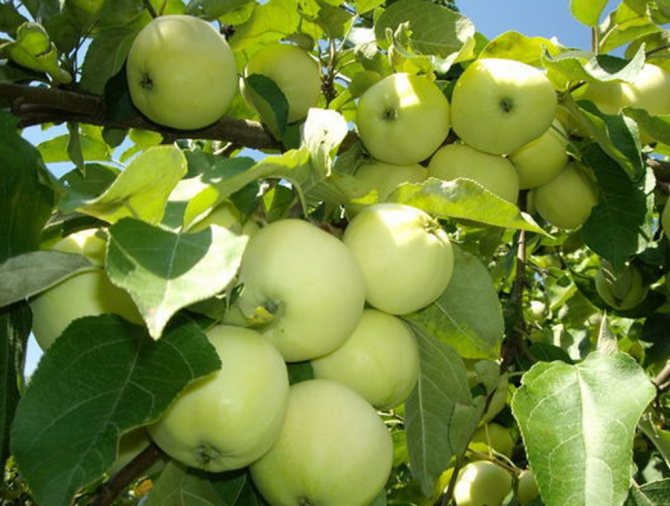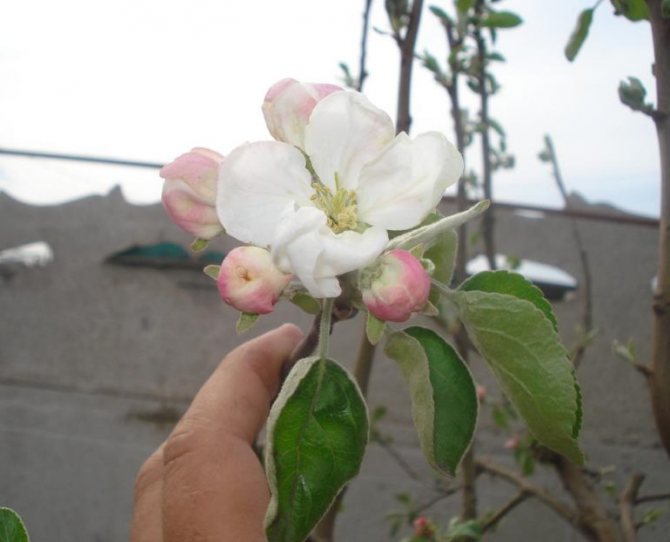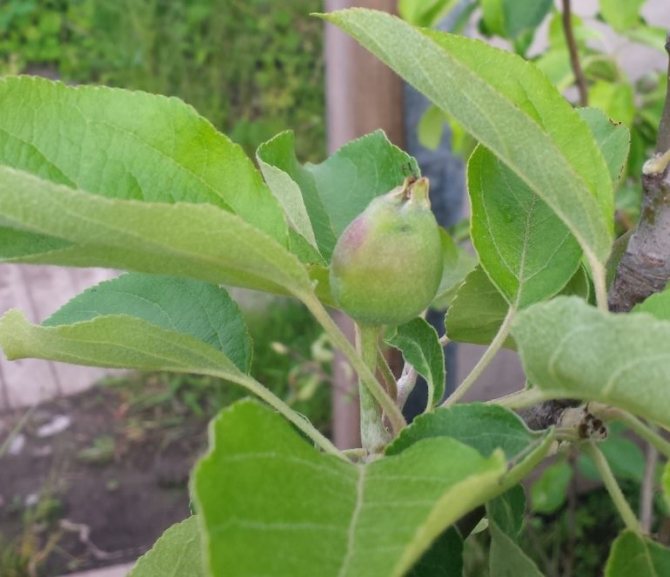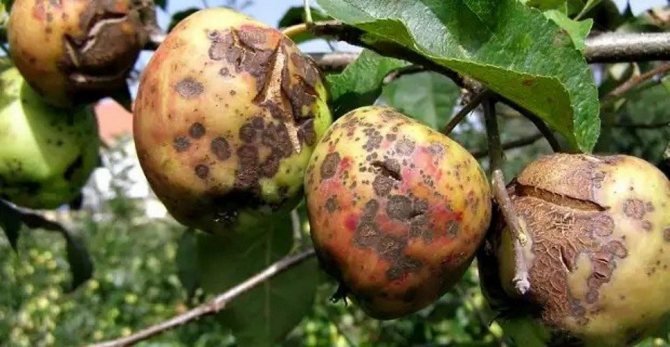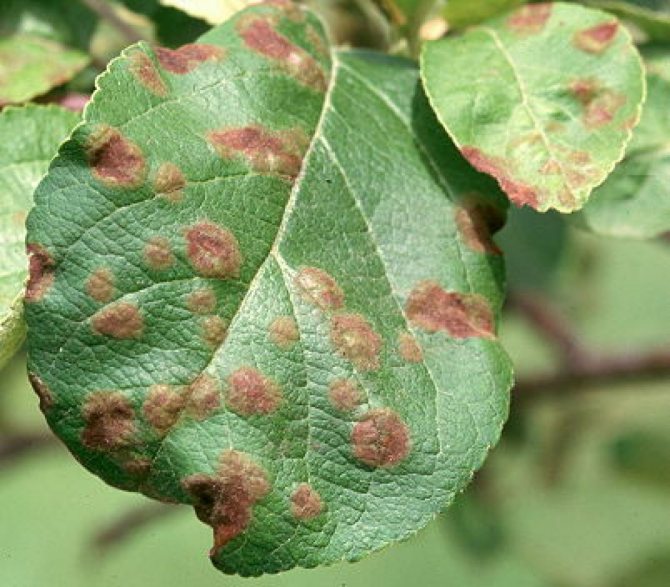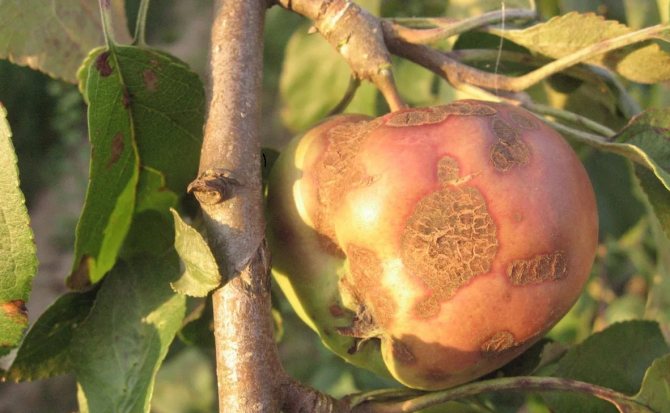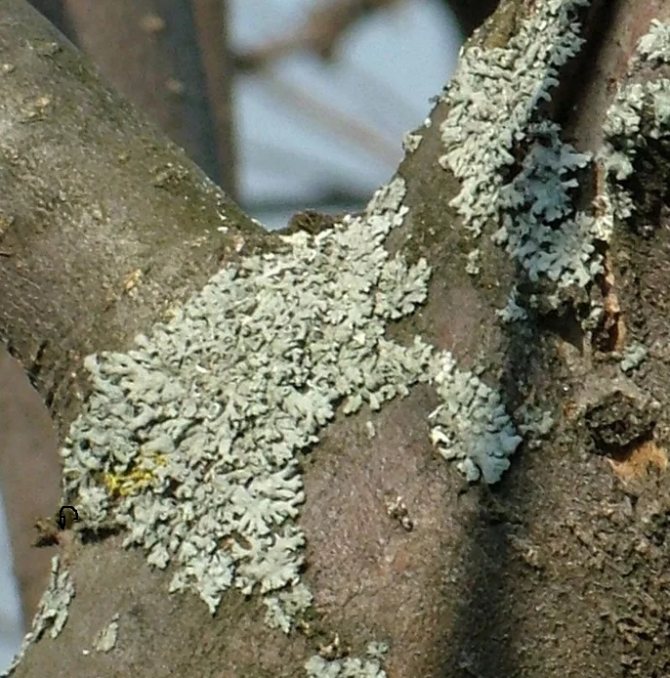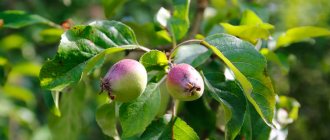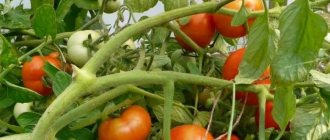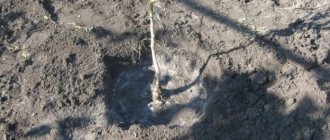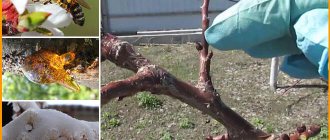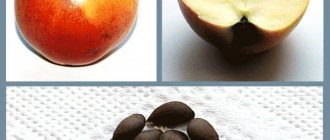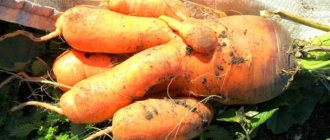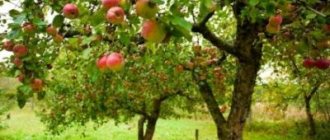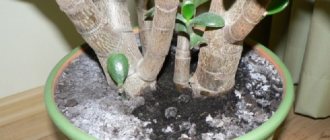We talked about apples ... Not a word was said about the White filling ... Did you talk about apples?
For me, from childhood, my garden began with the White filling. And in the literal sense: at the entrance to the garden, two trees of this variety were met. AND both for a connoisseur and a fan of apples - how many years have passed, and for me he began to grow apples.
And especially in use. The first apples of summer... I don't remember a single variety that we would have eaten while still green. And we ate the White filling. And with a bang.
And I ask myself one more question: Eve and Adam, what apple did they eat? I think White filling. Well, not Bellefleur!
What is the height of the apple tree
This type of L.P. Simirenko considered it an old Russian variety. The apple tree is medium in size, about 5 meters high. A mature tree has a rounded dense crown, and a young one is in the shape of a pyramid. A grayish bark, leaves on a long petiole, oblong in shape, hanging down to the ground. The color of the apples is greenish-whitish. The shape of the fruit is round, slightly narrowed towards the bottom.
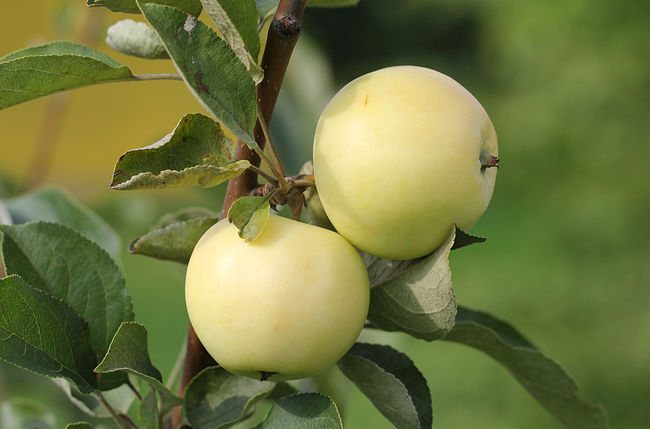
The peculiarity of the variety is a significant seam throughout the apple. Gradually, a white bloom appears on the fruits. It is stored until harvest. It can be washed off with water or removed by hand. Thanks to this, ripe apples acquired a white color and got their name.
Apples become smaller over the years. Young trees have fruits weighing up to 150 grams, and aging trees - up to 50 grams. The flesh of apples is homogeneous and friable, with a sour-sweet taste.
How long does an apple tree live
The plant lives at 20-25 years, but this is not the limit. The lifespan depends on the care.
How long does an apple tree bear fruit
A massive crop can be harvested within 5-6 years after planting the tree. Gardeners write that 2-year-old seedlings gave their first fruits after 2 years. Earlier, fruiting begins in apple trees on a dwarf rootstock.
How many apple trees bloom
In spring, the plant has large pink-tinted flowers. In the middle lane, the color is formed in early May and lasts, on average, 2 weeks. In the south of the country, the apple tree begins to bloom earlier, in the north - later.
Apple pollinators White filling
Apple variety White filling is self-fertile. The best pollinators are Antonovka ordinary, Mekintosh, Quinti. In some orchards, the Golden Delicious apple trees, which we wrote about in the last article, have become good neighbors of the tree.
Ripening terms
Fruits ripen from late July to early August. But they start eating the fruits earlier.
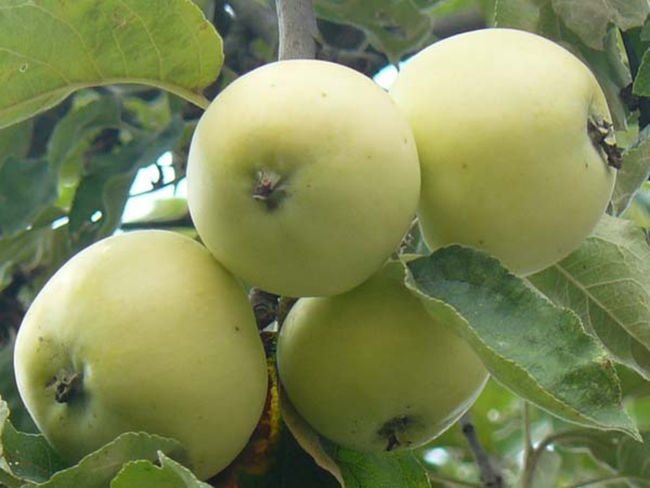

Most often, fruits are eaten freshly picked, because of their juiciness and tart taste.
Yield
This variety is high yielding. Up to 200 kg of apples can be harvested from one tree. The apple tree bears fruit in a year. The variety contains many vitamins and minerals. Detoxifies and cleanses the liver.
Frost resistance
Trees are frost-resistant, withstand temperatures of 35 degrees below zero. The onset of frost in the spring, after the appearance of the ovary, will not affect the harvest. Apple variety White filling in terms of winter hardiness is not inferior to Antonovka ordinary and Autumn striped. The apple tree has become widespread in all regions of the country.
Resistance to major diseases
Scab resistance of fruits and leaves is average. High humidity and neglect of plantings contribute to the disease of the apple tree. The plant is susceptible to other diseases and pests. Therefore, it must be processed for the purpose of prevention and treatment.
Harvest storage
Fruits of this variety are poorly stored.With optimal humidity and temperature, the fruits cannot be stored for more than 2-3 weeks. The fruit has a very delicate, thin skin. They cannot be damaged, try to assemble by hand. Minimal use of fixtures.
With minor damage, the fruit will rot quickly. The harvested fruits should be eaten fresh or quickly preserved. It must be remembered that the longer fruits are stored, the less useful properties they have.
Breeding history
Until now, it has not been possible to reliably determine the place of origin and time of appearance of the White Naliva, as well as to establish its "genealogy". Therefore, in the catalogs it is referred to as "a variety of folk selection."
In different localities, Bely Naliv is known under the dialect names "Bel", "Dolgostebelka", "Pudovshchina". In the former Soviet republics, the name "Alabaster" is often found.
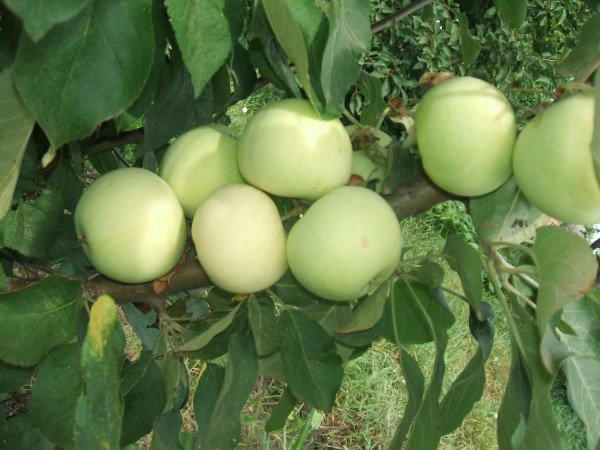

White Naliv is an old apple variety that is popular among modern gardeners.
White filling or Papirovka?
White Naliv is often confused with Papirovka, considering that these are different names of the same variety. Most likely, Papirovka is a seedling of White Naliva that has taken root in the Baltic States, which over time acquired some characteristic features due to climatic conditions.
In essence, their fruits and trees are quite similar. The hallmark is frost resistance. Folding in this respect is significantly inferior. In addition, it is noticeably sour, but it ripens 5-7 days earlier and suffers less from diseases and pests. Another feature of it is a clear side seam.
In the Baltic states, these apples are also divided, calling the “native” Papierinis “Popierinis”, and the “alien” White Naliv - “Baltasis Alivinis”.
Reviews of gardeners about the variety White filling
Tatiana, Voronezh
These are my favorite apples. I have a small tree in my yard, there are usually a lot of apples on it. They soften when ripe, but still taste great. If you eat them, green and firm, they are usually juicy, sour-sweet. Great apples for eating, making sauces and pies.
Victor, Samara
The family adores him. I would not choose it for food, as it becomes soft when ripe well. Doesn't travel very well and that's probably why you'll never see it on sale.
Irina, Murom
The best apple for making puree. Little or no sugar is needed. Once you've mashed these apples, it's hard to go back to the applesauce in the jar.
Igor, Kursk
Easy to grow, hardy tree. It is best chosen for fresh food. It tastes fantastic.
Types of rootstocks
The culture is grown on different rootstocks and has different types.
Semi-dwarf
Below a medium-sized tree, it grows up to 4 meters in height. Very frost-resistant, in other respects it is similar to dwarf rootstock plants.
Dwarf
A low-growing tree, 3 meters high. Can be planted among tall plants. Horse roots, not afraid of closely located groundwater.
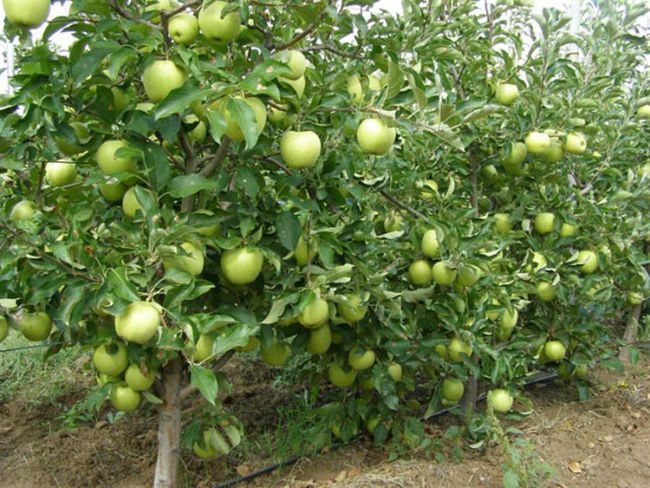

The yield is higher than that of other species. Will begin to bear fruit in 2-3 years.
Creeping
The most frost-resistant species, undersized, cultivated in Siberia.
White filling is widely used in breeding. On its basis, varieties were bred:
Ripening time
Full ripening of apples occurs in August. Ripening is uneven, but in June you can taste the delicious White filling. Usually, the first harvest is carried out at the end of July, the second - in the middle, end of August, depending on weather conditions. If the fruits are overripe, they become sandy, friable, their juiciness and aroma are lost. Apples are tender, any scratch or fall leads to spoilage, decay. When harvesting, shaking is not allowed, they are picked only by hand. The maximum shelf life is 3 weeks.
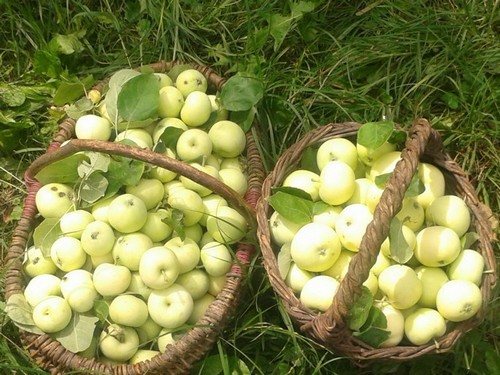

Apples cannot be transported, at the slightest impact a dark spot appears, the process of decay begins. The variety is used by gardeners for personal use, conservation.
Varieties of varieties
Pink filling
The variety is widespread in the center of the country. Fruits weighing about 200 grams, light green in color, a blush appears at maturity.


Rounded, flattened shape.
Honey filling
This species is the most delicious, has a rich yellow color.
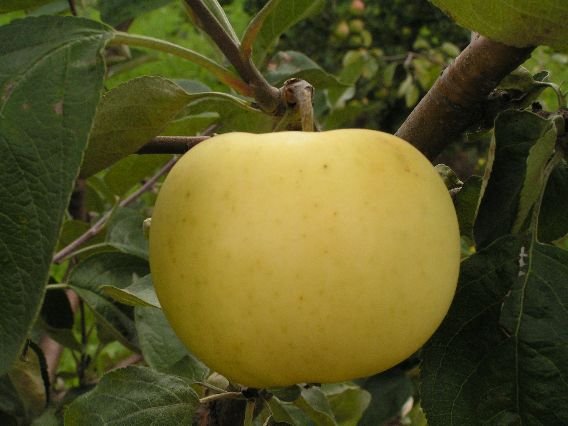

Small-fruited - up to 90 grams in weight, scab resistant and frost-resistant.
Ural filling
Fruits weighing up to 100 grams, with a golden hue. A fast-growing species, begins to bear fruit 2-3 years after the planting of seedlings. Apple flavor is almost imperceptible.
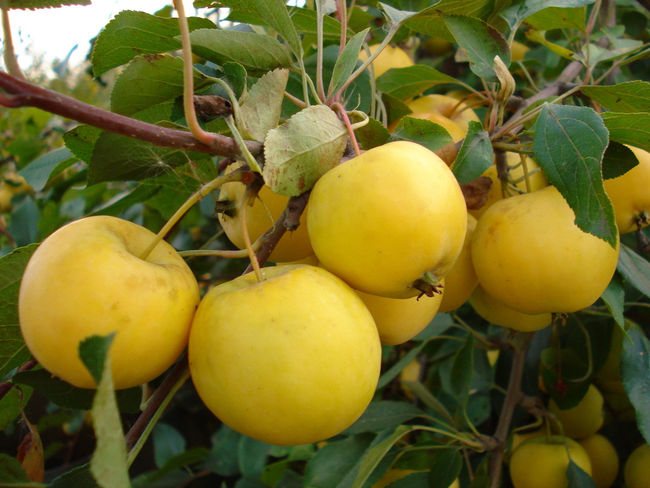

The Ural filling will withstand frost at -40 degrees.
Steppe
The smallest species. Fruits up to 45 grams in weight. Winter-hardy variety, cultivated in the Far East. The life span is 15-20 years. The tree is no more than 2 meters high.
Isetsky
Fruits weighing 130 grams, yellow with a gray tinge. The height of the tree is 4-4.5 meters.
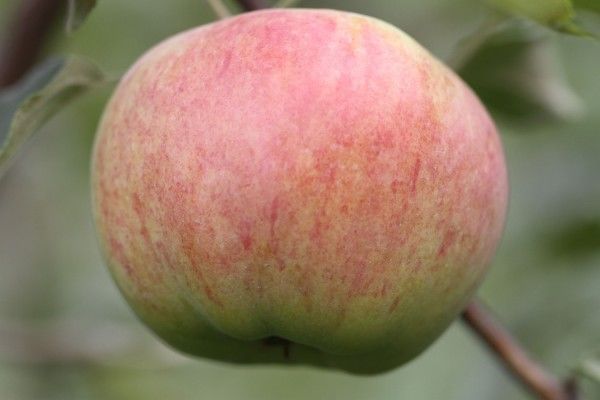

It is very susceptible to major diseases of apple trees.
Video: The softest biscuits with apples
- Pickled apples
There are a huge number of recipes. Differences in additives that change the taste of apples.
Ingredients:
- apples - 20 kg;
- cold water - 10 liters;
- basil - 100 g;
- black currant leaves - 20 pcs.;
- rye flour - 150 g;
- honey - 500 g;
- coarse salt - 170 g.
The water is boiled, allowed to cool to 40 degrees. Gradually add flour, salt, honey, mix until dissolved. Leave the brine to cool. Apples, currant leaves are washed thoroughly. At the bottom of a deep saucepan or bucket, currant leaves are laid in layers. Put apples, basil on top, repeat again. The rest of the currant leaves are spread on top. Pour with brine, cover with a lid slightly smaller in diameter than the container itself. Oppression is laid on top. It is kept for 14 days at a temperature of +15 degrees Celsius, away from direct sunlight. After that, the finished apples are removed to a cool storage room.
Now Reading: Proven and Simple Soaked Apples Recipe
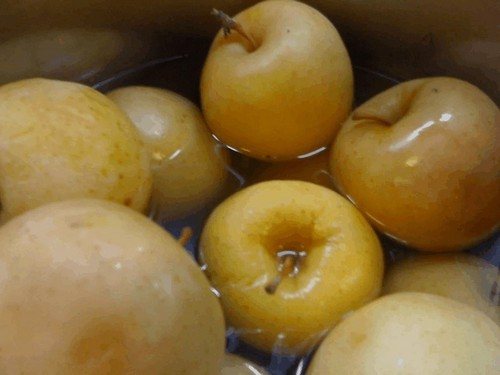

Care rules
Pruning varieties
There are formative, sanitary and supportive.
Formative, i.e. forms a crown, pruned within 3 years. The branches of the 1st, 2nd and 3rd levels are alternately left with the conductor. Sanitary pruning involves pruning dry and damaged branches. Supportive - prevents thickening of the plant. Remove stems that grow at an acute angle.
Top dressing
Begins 2 years after planting. Both organic and mineral fertilizers are used. Root and foliar top dressing. For 1 sq. the meter of the trunk circle is used:
In autumn
:
- Humus - 2.5-3 kg;
- Ash - 40-57 gr.
- Superphosphate - 16-18g.
- Potassium sulfate -10-15 gr.
In the spring
:
Urea - 7-13 gr
Trees can be sprayed with urea at the rate of 10 grams. for 10 liters of water.
Watering
The apple tree is drought-resistant and does not require abundant watering. It is enough to water 4 times per season, based on 5 buckets per tree:
- In the spring, after the snow has melted, when the soil dries out.
- After flowering after 20 days.
- In the 1st half of July.
- At the end of October.
By winter, you need to whitewash the trees and protect the trunk from rodents.
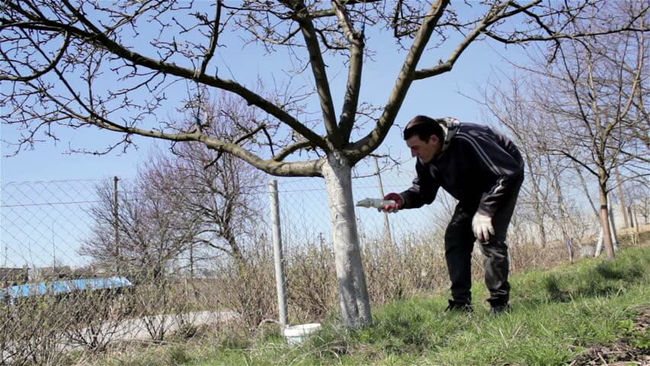

Diseases and pests
Carry out prophylactic treatment and when culture is affected by disease. For prevention, you can use the drug Fitosporin, in accordance with the instructions. In case of significant damage to the apple tree, we use chemicals. Spray with fungicides before and after flowering. See the most common apple tree pests with photos and descriptions.
Landing features
When planting seedlings, the climatic conditions of the region, specific weather conditions and the requirements of the variety for growing conditions are taken into account.


Conditions for disembarking the White filling:
- The best soil is loam.
- Swampy soils are not suitable.
- If the site is located in a lowland, its seedlings are planted on a hill.
- The lighting should be good. Plots with a south or southwest slope are recommended.
- The site must be protected from the north wind - in the form of a planting, fence, wall. The distance from the protective barrier to the tree is at least 2.5 m.
- If the seedling is planted on clay soils, its structure is improved by introducing river sand into the planting pit.
- The optimum acidity of the soil is pH 66.5 (neutral and slightly acidic).
The roots of other trees should not be present near the planting site - they will take water and nutrients from the soil.
Disembarkation dates
When to plant White filling - in spring or autumn, depends on the climatic zone - in regions with severe winters, the spring option is preferable.
Saplings are planted not earlier than the end of April. The deadline is early May. The landing condition is warmed up and dried out earth. Spring planting is recommended for young seedlings.
If the seedlings are more than two years old, an autumn planting is possible - in early October. From the moment of planting the seedling to the first frost and freezing of the soil, at least a month should remain - based on this condition, the planting time is determined.
Preparatory activities
The seedling is soaked in water for a day before planting. But the pit is made a month before planting. Features of pit preparation:
- Planting scheme for seedlings - 4x5 m.
- A pit is digging - 80-90 cm in diameter, 60-70 cm deep. On clay soils, the depth of the pit is 1 m (including drainage).
- Black soil, peat, humus and sand mixed in equal parts are poured into the pit. Superphosphate is introduced - 300 g, and wood ash - 3 liters.
If a hole is dug in the fall, only humus (1: 1 mixed with soil) and ash (0.5 l) are introduced into it; if in the spring, fertilizer is added to the last portion of the soil, which the seedling is sprinkled with.
Step-by-step planting instructions
The order of planting a seedling:
- Inspection of the seedling. If brown spots appear on the root cuts, the ends are cut. Check for putrefactive lesions - they should also be trimmed. If you missed the moment with lowering into a chatterbox, they do it just before planting - to prevent the roots from drying out.
- The prepared seedling is lowered into a pit, in which a support peg has already been placed. The latter is placed so that it covers the plant from the sun - on the south side of the trunk.
- Spread the roots, carefully placing them on a hill from a soil-humus mixture. Make sure that the non-root collar is not below ground level, it should be about 5 cm above the ground.
- The pit is covered with fertile soil, carefully ramming. When sprinkling the hole, the trunk is shaken well - this helps to fill the voids formed between the roots with the earth. Such a technical nuance of planting will prevent the tree from drying out.
- The trunk is tied to a support peg - it will prevent sunburn and protect the roots from loosening in strong winds.
- Watering. One tree needs 3 buckets of water.
- Mulch the soil near the trunk to retain moisture. Mulch thickness - from 5 cm.
Harvesting and storage
The apple variety White filling ripens in late July - early August. You need to harvest very carefully, the fruits are easily damaged. The crop is not stored for more than 2-3 weeks. To preserve it, follow these simple rules:
- pick apples in dry weather;
- stack in one layer, wrapped in paper;
- boxes should be made of cardboard and wood, with holes;
- sprinkle the bottom with sawdust so that the fruits are not damaged;
- the air temperature is not higher than 10-12 degrees;
- the room must have ventilation.
Features of cultivation in different regions
Depending on the climatic conditions of the region, the form of growing White filling is chosen:
- Moscow suburbs... Distributed everywhere. This variety is found in most gardens near Moscow. Bears fruit every two years.These are the first apples in the garden, so gardeners forgive them for poor keeping quality and inability to transport.
- Siberia. Apples grow here medium-sized - 60-90 g. The tree begins to bear fruit from 5-6 years of age.
- Ural. Here bulk apples are grown in stanza form - it is more frost-resistant. Fruits ripen at the end of August.
- Bashkiria. Here they grow especially frost-resistant White filling, with triangular fruits.
- Far East and Amur Region. Despite the fact that the variety is not included in the Far Eastern District, White filling, adapted to local conditions, is safely grown here.
White filling has enough drawbacks - it lies poorly, is practically not transported, and its yield is cyclical. But all the shortcomings are smoothed out against the background of its merits. Having planted this over-yielding variety in the garden, you can always eat juicy apples before others, make preparations, and even treat all relatives and neighbors in the country.
0
Reproduction
White filling is propagated in the same ways as all apple trees.
Seed propagation
Mostly used by breeders. These trees need to be properly pollinated.
Special knowledge required.
By vaccination
This is the most common way to reproduce apple trees. Young shoots of the first year of life are used as a scion.
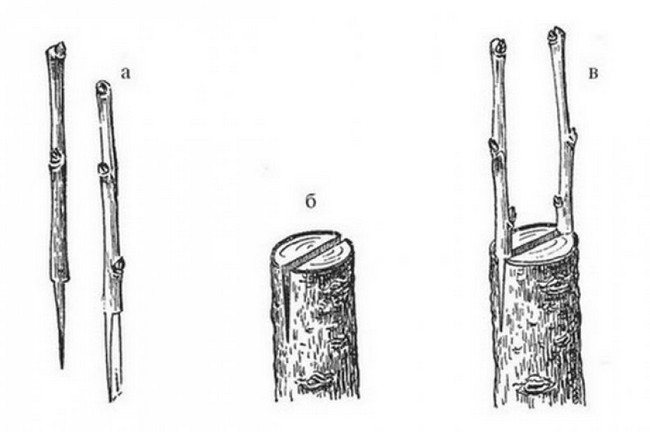

Often grafted to the root of a tree - wild.
Root cuttings
They are used as seedlings. For this, the roots of the tree are covered with soil at a height of 20 cm above the ground. Here ready-made seedlings grow. In the fall, they can be planted in a new place.
Layers
To do this, bend down the lower stems and let them take root, sprinkling them with earth. Then they are planted in their place.
We recommend watching a video that tells about an interesting way to reproduce fruit trees - by air layers.
Broken branch
Annual branches are cut and buried to a depth of 10 cm. Weeds are removed and constantly watered until the branch grows roots. In the fall, they are transplanted to a permanent place.
The benefits of apples
The fruit contains a huge amount of vitamins, minerals, nutrients. Eating one apple a day provides the daily intake of potassium and iron. This is one of the few fruits that are allowed to be eaten during pregnancy, during breastfeeding, and given to babies as complementary foods.
Now reading: Apples Antonovka: on growing trees
Beneficial features:
- enhances intestinal motility, eliminates constipation;
- increases hemoglobin;
- prevent the appearance of cancer cells;
- lower cholesterol levels;
- strengthen the immune system;
- have a choleretic effect;
- strengthens bone tissue;
- speeds up metabolism;
- improves liver function.
The composition contains organic acids, folic acid, vitamins of group B, C, A, iron, potassium, calcium, phosphorus, boron, sodium, zinc, iodine, magnesium.
Answers to readers' questions
Rusty leaves on an apple tree
Apple rust is a fungal disease. Spores overwinter as a reddish-brown mass on young juniper twigs. In early spring, when it rains, the spores are carried away by the wind and infect the apple trees. Spores from apple trees will infect junipers only next year. From year to year, the disease should move from juniper to apples and again to juniper.
After flowering, apple trees develop pale yellow pinhead-sized spots on the upper surface of the leaves. They gradually increase to bright orange-yellow spots. Orange spots can also develop on fruits. Infected leaves fall off prematurely.
Fighting the disease
- Plant resistant varieties.
- Rake and dispose of fallen leaves and other debris from under the trees.
- Remove the yellow mass from infected junipers or the juniper itself.
- Apply fungicides.Spray the juniper with a solution of copper at the rate of 14-56 g per 5 liters of water, 4 times from late August to late October.
- Use preparations containing sulfur. If the weather is wet, mix 100 g in 5 liters of water. Spray all parts of the plant thoroughly, especially new shoots.
Why do apple trees bear fruit in a year
Depletion
When the apple tree bears fruit abundantly, the tree is depleted. The next year, the harvest decreases or the apple tree begins to bear fruit in a year. It is necessary to thin out young fruits at the beginning of summer so that the next year's harvest is normal. Remove the smallest fruits. Leave one for each bunch. One fruit for every 40-75 leaves, fruit should be evenly distributed along the branch.
Poor care
Lack of water or nutrients reduces apple yield, causing the trees to bloom and bear excessive fruit the next year.
Unfavorable weather conditions
Apple trees that lose their color during a storm or a sudden cold snap tend to bear fruit after a year.
Varieties of varieties
There are apple varieties that are more prone to such fruiting than others. Early maturing varieties are also at risk and need careful thinning.
Other reasons
Poor pollination and incorrect pruning. Many apple trees need a compatible partner for successful pollination. A lack of flowers on a single tree, possibly due to bad weather or tree dying or cutting down, can result in decreased fruit on its pollination partner. You can also prune the areas of the tree where the fruit grows. This applies to trees that have fruit at the ends of their stems.
How to pick apples from a tall apple tree
You can buy gadgets at the store or make them yourself. The most common pickers are made from plastic bottles. To do this, cut out the bottom of a 2-liter bottle, make a V-shaped notch. Tape around the hem with tape for reinforcement and place on the pole. Bring it to the apple, grab it and cut it off with a rotating motion. It is in the container.


Another device can be made from 3 pipes of different lengths. They connect together. At the end, on top, a grip is made of wire, with rings. A fishing line is inserted into them, which is used for clamping. The device is brought to the fruit, pulled by the fishing line, the apple ends up in the container. For these purposes, devices with bags and baskets are used.




